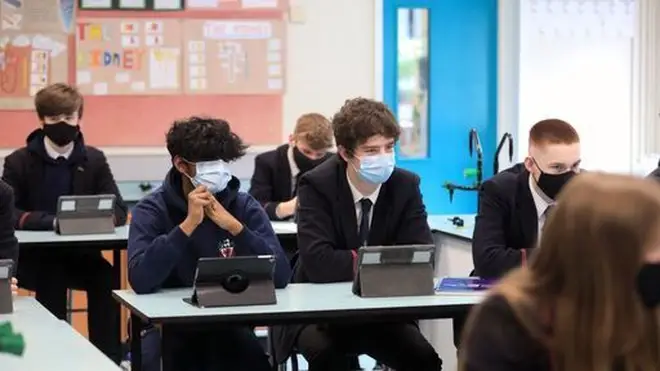
Ben Kentish 10pm - 1am
26 March 2021, 14:20

Covid infection rates increased among secondary school aged children in the week to March 20, according to the latest data from the Office for National Statistics.
Tests carried out found an increase in coronavirus infections in 11 to 16 year-olds, in school years 7 to 11.
Rates fell among older teenagers and young adults, those in school year 12 to age 34. Rates also fell for those aged 50 to 69, yet the trend is uncertain for other age groups.

Missing school is 'worse than getting virus' for children
READ MORE: How will GCSE and A-level grades be calculated in 2021?
Overall, the number of people testing positive for the virus has levelled off in England, Wales and Northern Ireland, and risen in Scotland.
The ONS analyses data which tests a random sample of adults and children.
In England, the percentage of people testing positive for coronavirus “is likely to have levelled off” in the week ending 20 March 2021.
It estimates that 162,500 people within the community population in England had Covid-19, equating to around 1 in 340 people.
READ MORE: UK Covid R number rises slightly to between 0.7 and 0.9
In Wales, the percentage of people testing positive “appeared level” in the week ending 20 March 2021, and it estimates around 1 in 450 people had Covid-19.
In Northern Ireland, the percentage of people testing positive also “appeared to have remained level” in the week ending 20 March 2021. It estimates around 1 in 320 people had the virus.
In Scotland, the percentage of people testing positive increased over the two weeks up to 20 March 2021. It estimates around 1 in 240 people had Covid-19.
The latest R range for the UK is 0.7 to 0.9.
An R value between 0.7 and 0.9 means that, on average, every 10 people infected will infect between 7 and 9 other people.
A growth rate of between -5% and -2% means that the number of new infections is shrinking by between 2% and 5% every day.